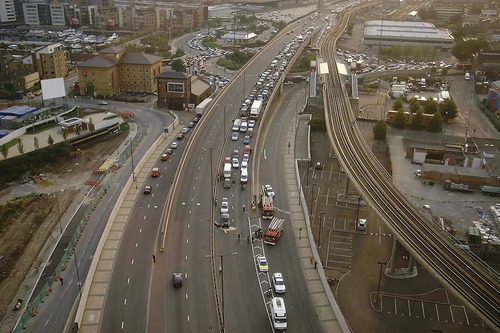CASE 1
 |
Incident
A car has collided with a motorcycle 15 minutes ago at an estimated combined speed of 80 km/h (53 mph). The motorcyclist is trapped.
Relevant information
▪ Aircraft: Rotary wing
▪ Ground resources: One land ambulance. Two ambulance response vehicles. Police and Fire & Rescue Services
▪ Retrieval options: General hospital 15 minutes by road. Major trauma hospital 30 minutes by air
▪ Other: Friday 17:20 hours
Question
Discussion
1.1 In brief, the approach to the scene offers an opportunity to:
• Identify potential hazards.
• Briefly ‘read’ the likely mechanism.
• Identify patient numbers, distribution and acuity of injury.
• Commence formulating a pre-hospital plan.
Scene assessment is critical to ensuring team, scene and, ultimately, patient safety. It begins as soon as details of the task become available. The tasking agency may have access to further information which may be forwarded to the team en route.
Arrival by air
Approaching the scene from the air offers considerable advantages over a road response. The entire Helicopter Emergency Medical Service (HEMS) crew (of which the pre-hospital and retrieval team (PHR) are an integral component) should utilise this opportunity to both study the incident scene from above and ensure all potential aviation hazards are communicated clearly and briefly. This should be done by referencing a clock face (where the nose of the aircraft is at 12 o’clock) and using the terms ‘high’ or ‘low’ to point out hazards. Landing site selection is at the discretion of the pilot, who is ultimately responsible for aircraft safety. A landing site may be pre-arranged with on-scene emergency services to facilitate landing but the final decision always rests with the pilot.
Key points (note many of these in the above scene) to look out for from the air in the HEMS environment are detailed in the box below.
Key points to note in the HEMS environment
Hazards
• Aviation (power lines, wires, fences, trees, light posts, towers and loose objects).
• Scene (moving vehicles, open roads, fire hazards and scene topography including height risks).
Emergency services on scene
• Ambulance resources (may alter what you will take with you from the aircraft, e.g. additional oxygen, splints or other equipment).
• Other services (particularly note the absence of Fire & Rescue and/or Police, thus requiring additional team vigilance).
< div class='tao-gold-member'>
Only gold members can continue reading. Log In or Register to continue
Stay updated, free articles. Join our Telegram channel

Full access? Get Clinical Tree








